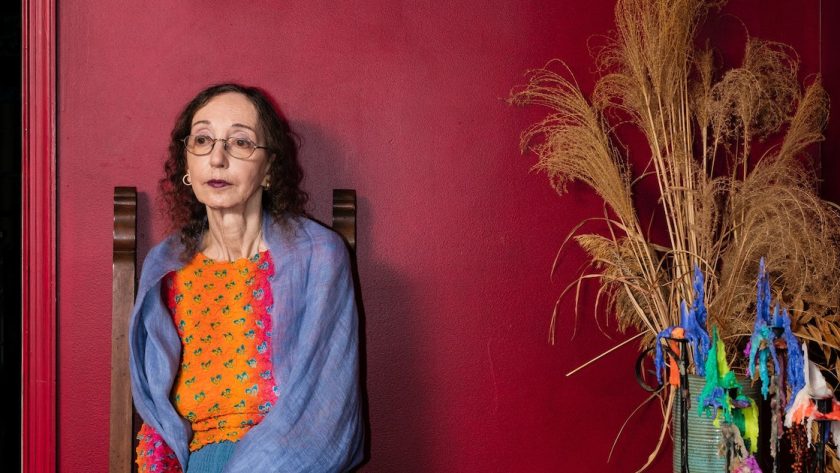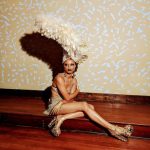“It’s all about people who are trying to win games with other people, and they think they can negotiate and calculate and calibrate,” says Joyce Carol Oates. “It all backfires.” Oates is describing her titular story in her new collection, Zero-Sum. If anything is classic Oates, it’s flawed humans, inadvertently flying headlong right into a backfire.
You’d be forgiven for losing count, but with Zero-Sum, the provocative 85-year-old woman-of-letters is onto her 47th collection of short stories, not to mention her 62 novels, and twenty-sum sundry other works of nonfiction, poetry, and books for children.
This collection uses the zero-sum economic theory—that one party’s win comes from another party’s equivalent loss—over a dozen different social environments across as many stories. In “Zero-Sum,” a tense young academic seeks intellectual kinship with her philosophy professor at the cost of alienating her community. In “Mr. Stickum,” vigilante teenagers target men who attend pop-up sex parties with human trafficking victims. In “Monstersister,” a fraught young girl attempts to manage the parasitic rebirth of her twin, previously lost in the womb. To summarize it too simply: Zero-Sum contains a series of grave miscalculations.
As if to clarify, Oates tells me, “I don’t think human relationships should be that way.” This approach is exactly what makes these stories so riveting. Oates, as ever, turns to what we should not be, and that’s where she shines.
How did you decide on the concept of zero sum as the organizing principle for this collection?
All my collections of stories have an organizing principle. In some cases, it’s the presentation of the self; in this case, it’s the idea that human beings strive to control the narrative we find ourselves in. I don’t think life is or shouldn’t be a zero-sum game. That’s one of the reasons our politics is so toxic, is that somebody wins and somebody loses, so the people who lose don’t have any representation anymore. It’s either-or, rather than unifying.
The last story, “M A R T H E: A Referendum,” is a zero-sum story about AI and the last surviving person—
Marthe was the name of the last passenger pigeon. This story is about a human being. It’s about human insanity and greed and murderousness and disrespect for other species.
It doesn’t feel that unreal or far-fetched, because the AI devices were created to help homo sapiens. If there’s an epidemic, they may survive and we won’t. The ultimate zero-sum game is that our whole species is a kind of gamble. And maybe we’ll lose. I’m sorry that the collection ends on such such a bleak note. But the very last line is (that) we can still vote. We can try to vote for people who (could) help set back climate change.
Do you know of AI of your work yet? I’m sure it exists.
No, I wouldn’t have any interest in that. It pulls together sentences and words into a big stew. That would be of no interest. Who cares? (Laughs) You could cut out words from Shakespeare, put them all together in a mixer, and then put them on a table. Why would you do that?
Many of these zero-sum stories have themes of surveillance—like a mother bewitched by a baby monitor, or a man briefly preoccupied with a coat that would let him avoid cameras. And your novel Hazards of Time Travel depicts a highly-monitored near-future. What ideas about surveillance did you want to explore in this set?
In “The Baby-Monitor,” you are staring at the screen, rather than the actual baby. And then when you see the actual baby, it sort of looks different. It’s so weird because most of the way we relate to people now is through a screen. You love your baby; but you don’t have any of those feelings for other babies. So it’s a question of humanitarianism. Why is that baby more important than somebody else’s baby, you know? These are shocking philosophical questions or epiphanies.
What was the last book you read that brought you a sense of epiphany?
Probably every book that I read has merit. I wouldn’t really waste time reading something that wasn’t meritorious. So, there’s always some epiphany. But recently, (Yasunari) Kawabata’s House of the Sleeping Beauties and Other Stories. His writing has a lot of dialogue in it. And at the same time, there are a lot of lines that are very poetic. He has a surreal element.
Onto the Culture Diet questions. What time do you wake up in the morning and what is the first thing that you do?
Well, I wake up probably about 5:30 or 6. I sometimes try to sleep a little longer and keep my eyes closed, because that’s a very rich and imaginative time, before we open our eyes. If you’re writing, and I would think probably for any kind of artist, you’re closer to the unconscious. So, I think about what I’m going to be writing when I do get up. I rehearse the chapter or the scene. Then I might get up at around 6:30 or 7, and then I make some herbal tea and then I go to work.
What herbal tea do you make?
It could be peppermint, and it could be apple, orange.
When you wake up, is that from an alarm? Or do you wake up naturally?
I always wake up quite early. And when I’m traveling, I wake up very early and I often go out for a walk or run. I just got back here (to Princeton) from Saratoga Springs. Yesterday morning, I was video recording horses with my cell phone. It was wonderful to see the horses running, but they’re not racing. That’s a typical morning for me. I tried to blend going outside and walking and running.
So what is the first thing that you read in the day?
It might be the New York Times online. And maybe I will go to Twitter. I got a lot of news and links to articles on Twitter. I follow lots of journalists and poets and classicists.
What books are on your bedside table right now?
Well, let’s see. I have a wonderful new book of poems which I’m going to reread by Patricia Smith called Unshuttered. It has rare 19th century photographs of Black women, men, and children. Some of them were enslaved, some had been freed. Each page is a photograph of a Black person and then the facing page is a poem that Patricia Smith imagines about the person, because they’re anonymous people from the 19th century. The photographs are so beautiful. I’m definitely going to nominate it for some award because I’m a juror. I do like rereading things that I’ve already read.
What are you rereading or eyeing to reread now?
I always have Emily Dickinson’s Collected Poems right nearby, where I can reach it very easily. Every time you read her poems, it yields some new meaning.
There’s an Emily Dickinson line you bring up in Zero-Sum that was so striking. It was about someone’s eyes looking like dregs of sherry in a glass.
Yes, wasn’t that good?
Yes!
She’s filled with all these incredible visual images. I think that you could have a whole year devoted to her poetry. Also, her letters were similarly poetic. They’re much like a riddle. They’re not just dashed off. They’re enigmatic.
That reminds me of a quality in your work. Would you say you’re also drawn to writing a riddle?
Yes. I think I really relate to the world to my eyes, maybe more than some people or most people. There are some writers who don’t have much visual component in their writing, and others who have a lot of it. Samuel Beckett is almost all auditory. He’s for the ear. You read Henry James you almost don’t see anything. But you feel alive with James and you feel alive with Virginia Woolf. But if you read John Updike, you see a lot. If you read Annie Proulx and Cormac McCarthy, who are very beautiful chroniclers of the West, they use their eyes in all their writing. It’s like looking through a telescope—seeing through their eyes. And you’re seeing landscapes, which also metaphorical. There’s meaning when they describe something.
What is the last piece of art that you bought or simply coveted?
I have large landscapes by Wolf Kahn.
Oh wow!
Do you know him?
I love him. Those colors.
My first husband, Ray Smith and I were collecting his work in a small way. We didn’t have a large house. So I have probably two large, beautiful, gorgeous, absolutely gorgeous paintings. And I have smaller paintings of his, and drawings, probably about five or six Wolf Kahn. I never ever get tired of it, I just sit and stare at them.
What is the last museum exhibit or show that you loved?
Well, almost everything I go to I like a lot, because that’s why I go. I’ve seen the Avedon photography exhibit twice, which is at Gagosian. It’s excellent. It could be larger. He’s wonderful. The faces, the portraits are just so astonishing.
What’s the last thing you do before you go to bed?
Well, I read in bed every night for about one hour, so I really look forward to that.



